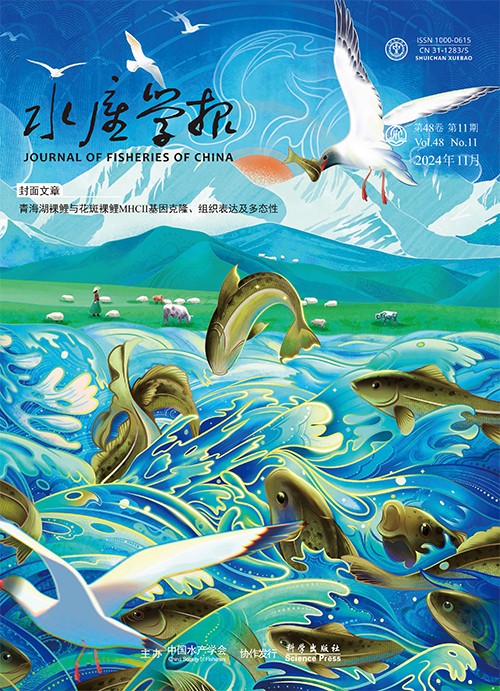法尼松酸o -甲基转移酶(FAMeT)基因的克隆与表达分析
Q4 Environmental Science
引用次数: 3
摘要
为了研究法脂酸o -甲基转移酶(FAMeT)在甲壳类动物换壳过程中的调控作用,采用反转录PCR(RT-PCR)和cDNA末端快速扩增(RACE)技术克隆了三瘤猪(Portunus trituberculatus) FAMeT全长cDNA(GenBank登录号:KC192659)。FAMeT cDNA包含一个201 bp的5 ' -未翻译区(5 ' -UTR)、一个318 bp的3 ' -未翻译区(3 ' -UTR)和一个825 bp的开放阅读框,编码274个氨基酸残基。与其他甲壳类动物的FAMeT氨基酸序列比对表明,其与P.pelagicus的同源性最高,为75% ~ 97%。氨基酸残基由CF(CPAMD8/FAMeT)结构域的两个拷贝组成,这是FAMeT的标志结构域,存在于所有甲壳类动物的FAMeT中。采用实时荧光定量PCR(Quantitative real-time PCR, qRT-PCR)方法定量FAMeT在三瘤假体不同组织及蜕皮期的相对表达量,结果表明FAMeT在不同组织中均有表达。FAMeT mRNA的表达量以牛颈神经节最高,其次是鳃和下颌器官(MO)。在蜕皮过程中,MO中FAMeT的表达量在D1期最高,在D4期逐渐降低至最低。结果表明,FAMeT在三瘤棘鱼的蜕皮调控中起重要作用。本文章由计算机程序翻译,如有差异,请以英文原文为准。
Cloning and expression analysis of farnesoic acid O-methyl transferase(FAMeT)gene during molting in Portunus trituberculatus
To study the regulatory role of farnesoic acid O-methyl transferase(FAMeT)in molting process of crustaceans,the full-length FAMeT cDNA(GenBank accession number:KC192659)of Portunus trituberculatus is cloned by using reverse transcript PCR(RT-PCR)and rapid-amplification of cDNA ends(RACE).FAMeT cDNA contains a 201 bp 5′-untranslated region(5′-UTR),a 318 bp 3′-untranslated region(3′-UTR)and a 825 bp opening reading frame,which encodes 274 amino acid residues.Alignment of deduced amino acid sequence with FAMeT amino acid sequences of other crustaceans revealed that it shares the highest identity with P.pelagicus among the identities ranging from 75% to 97%.The amino acid residues consist of two copies of CF(CPAMD8/FAMeT)domain,which are the hallmark domain of FAMeT and are present in all crustacean FAMeTs.Quantitative real-time PCR(qRT-PCR)was used to quantify the relative expression level of FAMeT in different tissues and at molting stages in P.trituberculatus.The results showed that FAMeT was expressed in various tissues.The mRNA level of FAMeT was the highest in taoracic ganglia,followed by gill and mandibular organ(MO).During the molting process,the expression of FAMeT in MO increased to the maximum at D1 stage,then gradually decreased to the minimum at D4 stage.The results suggest that FAMeT plays an important role in molting regulation in P.trituberculatus.
求助全文
通过发布文献求助,成功后即可免费获取论文全文。
去求助
来源期刊

水产学报
Environmental Science-Management, Monitoring, Policy and Law
CiteScore
1.40
自引率
0.00%
发文量
5213
期刊介绍:
"Fisheries of" mainly reflects the results of scientific research and development of the direction of aquaculture for domestic and foreign academic exchanges Fisheries Service. Mainly basic research published in Fisheries, aquaculture and proliferation of fishing waters environmental protection, preservation of aquatic products processing and utilization, fishing equipment, and other aspects of mechanical papers, research briefings and reviewed.
 求助内容:
求助内容: 应助结果提醒方式:
应助结果提醒方式:


